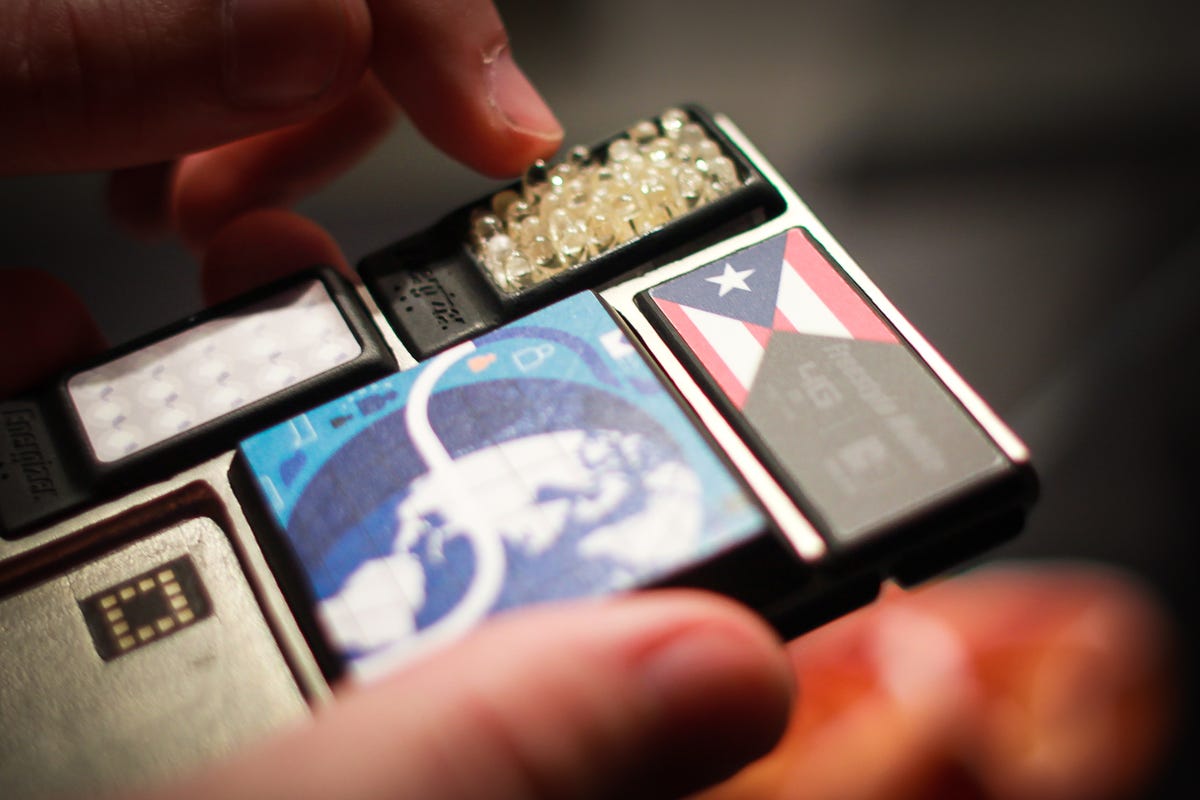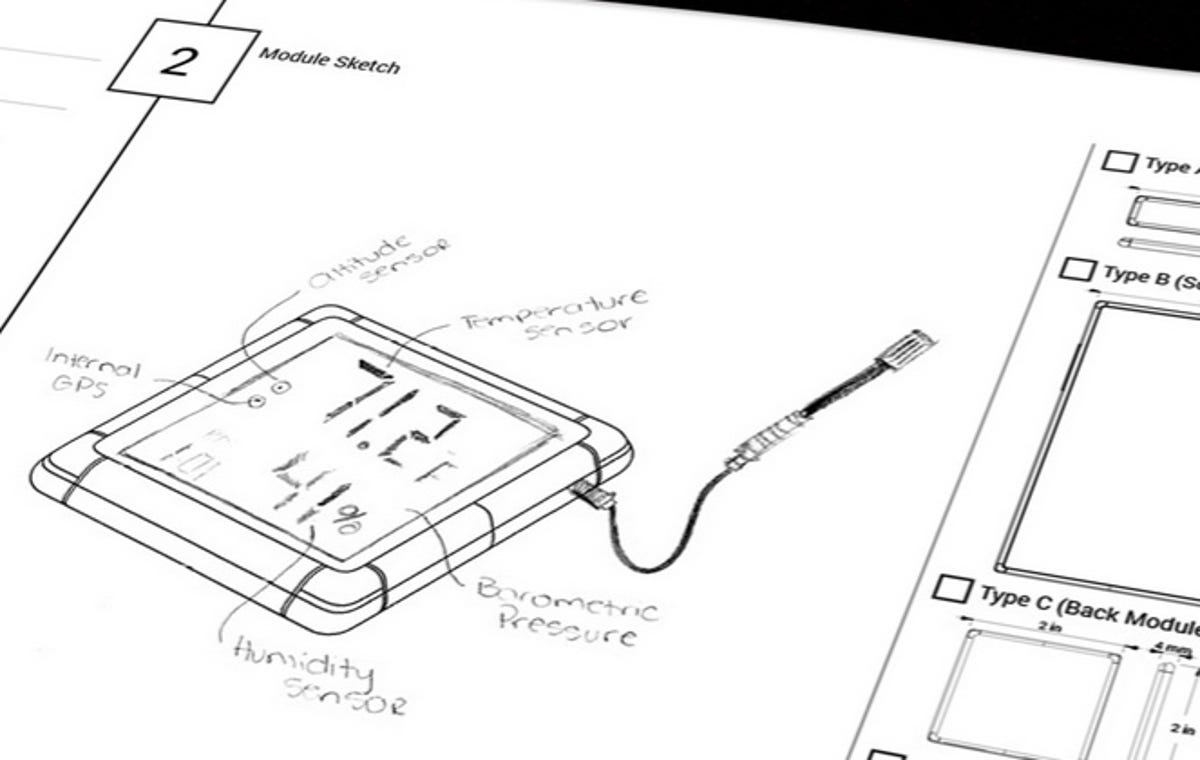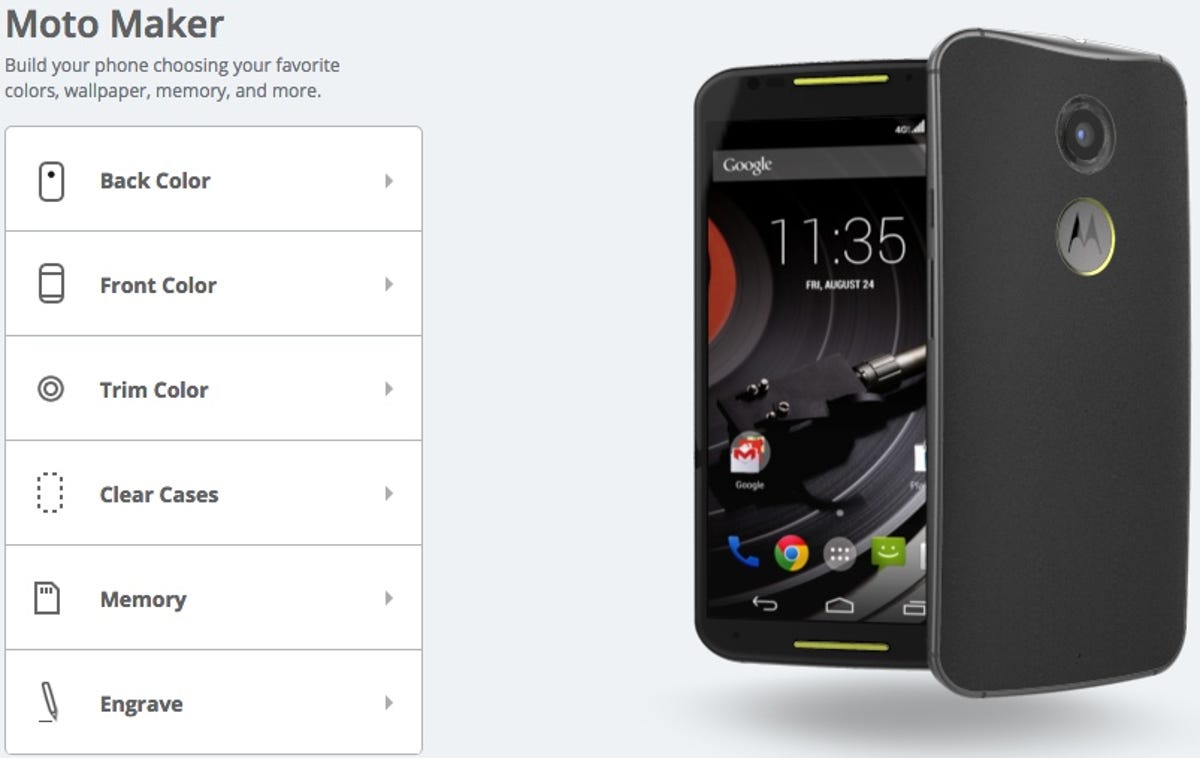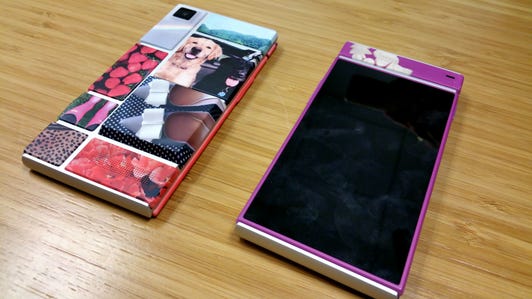
Lynn La/CNET
Imagine your phone as the ultimate Swiss Army knife, the perfect all-in-one toolkit. What would you want on yours: A mini screwdriver, a fingerprint scanner, a bottle opener? With Project Ara phones, the attachment possibilities are boundless.
Related links
- Project Ara: Everything we know about Google’s modular phone
- Yezz Project Ara module mock-ups give a tempting glimpse at Google’s modular future
- Google to test build-it-yourself Ara smartphones in Puerto Rico
Ara’s mix-and-match nature lets you upgrade components a la carte, and play around with leftover ports.
Google’s current design for an Ara handset — the endoskeleton, in Ara-speak — features 12 connection ports for snapping on rectangular modules like the battery and processor (really!). The main point is that Project Ara’s somewhat radical (and provocative) approach to smartphone-building is also one that for the first time gives buyers a form of creative expression not just over what their device looks like, but also what it does.
For instance, when your phone is fully charged, you could swap out the charging port in favor of a near-field communications (NFC) chip to make mobile payments. Or maybe it’s the regular camera module that gets the boot, in favor of one with a specialized infrared nighttime lens.
Piece by piece: A look at Yezz’s take on Google’s Project Ara (pictures)






If you were so inclined, you could even temporarily replace a nonessential unit, like that selfsame camera, with a tiny pack of breath strips to combat a garlicky afternoon out.
Crazy sexy cool
I can’t actually imagine a scenario in which I would unclip my smartphone camera for a pack of breath strips that fit just as easily in my pocket or purse, but someone at Yezz has.
As part of its role in launching Google’s first Ara phone pilot, Yezz, a Miami-based phone-maker, created a coffee table book of 100 concepts for the modular phone. A whole lot of these are practical, like an extra battery and dual-camera modules, wireless charging and an LED flashlight.


Yezz
Others are more fanciful, like a snap-on Pico projector or ultraloud speaker, a pill box or a CB radio. Then there are the attachments. Imagine picking up a flip cover that also houses an e-ink screen, or a snap-on game pad for playing retro titles.
Athletes could swap in any number of modules with more powerful, sensor-based functions for their sport. Health-care providers and patients could likewise add a specialized module for tracking certain long-term conditions.


Now playing:
Watch this:
What you need to know about Project Ara
1:35
Eyes on the customized prize
What’s unique about Project Ara phones is the deep level of customization that they promise.
“Customization” is one of those catch-phrases that’s usually (and ironically) saddled with a more fixed meaning than the word suggests. You can always personalize your experience through cases and apps (or by rooting the phone OS to apply your own ROMs.) In a rare turn, Motorola gives you Moto Maker to control the Moto X’s finish and accents.
Choosing your storage capacity is the only real way to affect the internals of conventional phones, apart from selecting the actual make and model itself. This is exactly Ara’s appeal, and its main argument over going the usual route.


Screenshot by Jessica Dolcourt/CNET
For its Puerto Rico pilot, Google partner Yezz plans to sell a basic model Project Ara phone, which customers can then augment through those aftermarket modules. While basic at first, those extras could balloon into those much more specialized features.
It’s easy to then envision how, like Moto Maker, buyers could build their phones online, starting with the color and size of the endoskeleton and then piecing together modules from third-party vendors, each with various backplate designs.
In terms of smartphones, it’s hard to get more bespoke than that.
What’cha gonna do with all that junk?
For all the creativity that Project Ara phones could bring, they aren’t without their logistical entanglements.
A fully-functioning phone will use up almost all of the endoskeleton’s modules, leaving maybe one or two ports free. So the reality of owning a bunch of swap-in modules is less practical. Where are they going to go when you aren’t using them?
Google’s Project Ara lets you build your own phone (hands-on pictures)






I imagine a handful of extras gently clinking around in a small carrying case, or maybe neatly arranged in a zippered organizer. Perhaps your deluxe camera dangles off a keychain. Or maybe most of them live at home, where you keep them as collector’s items the same way that Mobile World Congress-goers went crazy for these adorable Android pins.
Then there’s the question of how well they actually work. We’ve seen demos and plenty of mock-ups, but until we start hot-swapping hardware features, there’s no way to know.
Stirring the pot can do some good
Project Ara is an enticingly wacky idea that promises the most creative expression a person can have with the device that, for many, never leaves their side.
It may not catch on, especially at such an early stage in its development. Even if Ara never gets past its pilot program, though, I still like what it represents: a wild, but still attainable, concept that we can have some fun with; or, at the very least, a mental exercise in building our individual dream phones.


CNET Australia
Although as a mobile society, Ara isn’t our first collective pass at a modular phone, it is the only one to make real headway, floating on Google’s resources as a lab experiment.
Most famously, Dutch designer Dave Hakkens launched his own concept, Phonebloks, in 2013. Google cites another Ara forebear, however, a teeny tiny phone called the Modu 1 that you dressed up in hardware “jackets” and a new interface to suit your taste. We first saw that one as a preview device all the way back in 2008 and again as a commercial product in 2010.
It may not sound too hopeful that modular phones haven’t caught on in any meaningful way in the seven years since Modu first emerged, but from my perspective, that’s OK.
We need those reach-for-the-stars ideas in all areas of technology development, to inspire us past the sameness of so many devices. Besides, these ideas tend to transmute, growing beyond their initial hardware limitations and morphing into something stronger when engineers iron out the technical kinks.
Ara is a fun idea that won’t overtake the mainstream soon, but the important thing in dreaming up all manner of modular clip-ons is that it sets brains thinking about what’s possible for phones, and what’s next.


CNET
Smartphones Unlocked is a column that dives deep into the inner workings of your trusty smartphone.



